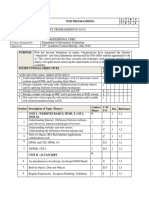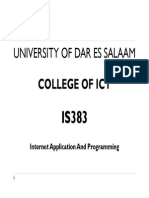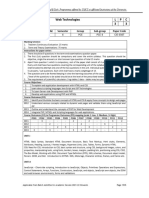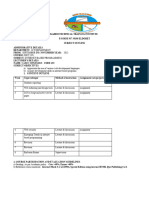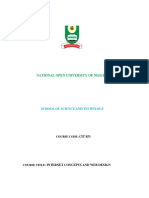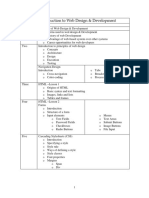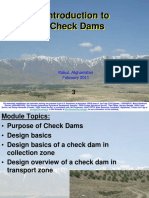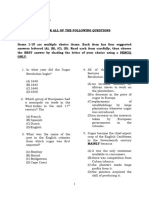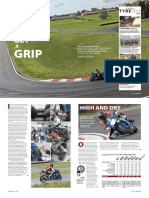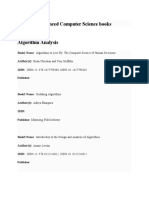0% found this document useful (0 votes)
39 views5 pagesCcs 222i Web Design and Programming Course Outline
The document outlines the course CCS 2221 Web Design and Programming at Multimedia University of Kenya, detailing its purpose, learning outcomes, and course content over 45 hours. Students will learn about internet programming concepts, HTML, CSS, JavaScript, and practical web development skills through lectures and laboratory sessions. Assessment includes assignments, continuous tests, and a final examination, with a focus on hands-on practical experience.
Uploaded by
japhetkevingtoneCopyright
© © All Rights Reserved
We take content rights seriously. If you suspect this is your content, claim it here.
Available Formats
Download as PDF, TXT or read online on Scribd
0% found this document useful (0 votes)
39 views5 pagesCcs 222i Web Design and Programming Course Outline
The document outlines the course CCS 2221 Web Design and Programming at Multimedia University of Kenya, detailing its purpose, learning outcomes, and course content over 45 hours. Students will learn about internet programming concepts, HTML, CSS, JavaScript, and practical web development skills through lectures and laboratory sessions. Assessment includes assignments, continuous tests, and a final examination, with a focus on hands-on practical experience.
Uploaded by
japhetkevingtoneCopyright
© © All Rights Reserved
We take content rights seriously. If you suspect this is your content, claim it here.
Available Formats
Download as PDF, TXT or read online on Scribd
/ 5











